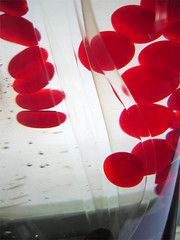China scientists show how arsenic treats blood cancer

In China, arsenic is well known for its toxicity in the past as the king among poisons because of its effects that often go undetected. However, it has long served a dual purpose. Apart from intentional poisoning, it has been used for at least 2,000 years in traditional Chinese medicine.
In 1992, a group of Chinese doctors reported how they used arsenic to treat acute promyelocytic leukemia (APL), a blood and bone marrow cancer that has surprisingly high cure rates of over 90 percent in China. However, the actual workings of arsenic and how it interacts with cancer tissues has never been clear -- until Zhang Xiaowei and his colleagues at the State Key Laboratory of Medical Genomics in Shanghai used modern technology to find out.
Our study showed how arsenic directly targets these proteins and kills them, said lead researcher Zhang.
Unlike chemotherapy, the side effects of arsenic (in treating acute promyelocytic leukemia) are very low. There is no hair loss or suppression of bone marrow (function). We are interested in finding out how arsenic can be used in other cancers.
Although many countries are now using arsenic to treat APL, some countries are resistant to the idea. It depends a lot on whether doctors recommend it and whether patients accept it.
In APL, there is a drop in the production of normal red blood cells and platelets, resulting in anemia and thrombocytopenia. The bone marrow is unable to produce healthy red blood cells. Until the 1970s, APL was 100 percent fatal and there was no effective treatment.
The clinical result of arsenic in treating APL is well-established. More than 90 percent of APL patients in China have (at least) five years of disease-free survival, Zhang said.
In a separate commentary in Science, Scott Kogan at the University of California San Francisco Cancer Center wrote that proper case selection and combination therapy with arsenic may lead to improved outcomes for treating not only promyelocytic leukemia, but other diseases as well.
If so, an ancient medicine, revived through careful clinical and biological studies in modern times, will have an even greater impact on human health, wrote Kogan, who was not linked to the Chinese study.





















